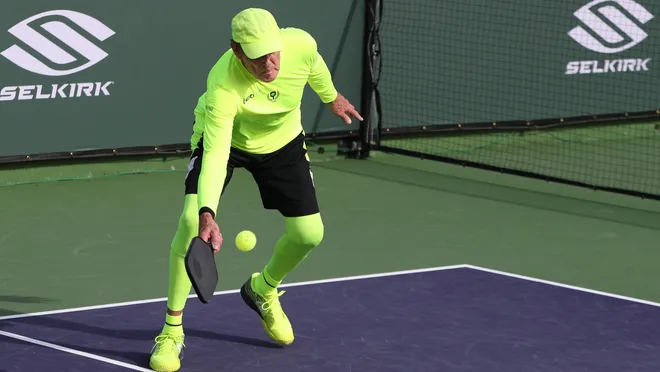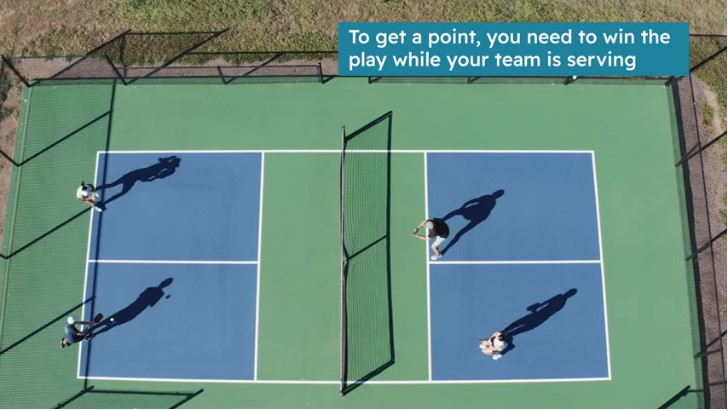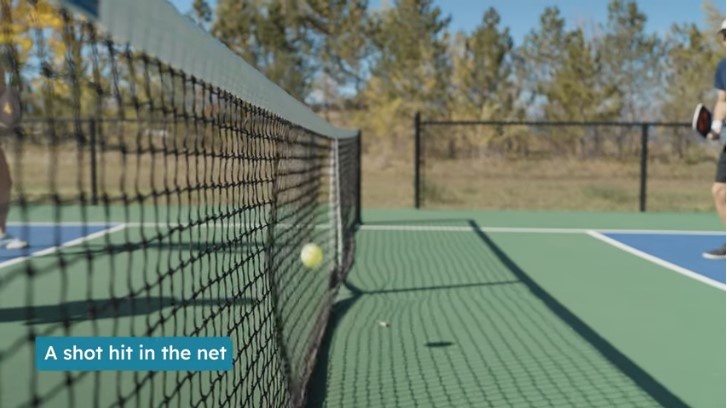Introduction:
In pickleball, understanding the concept of a fault is essential for new players to play the game successfully. A fault occurs when a player fails to comply with the specific rules and regulations of pickleball during a rally. Similar to other racket sports, pickleball has its unique set of faults that can result in a point being awarded to the opposing team. Learning about these faults will help new players improve their game and avoid costly mistakes on the court. Let’s explore some common faults in pickleball to provide new players with a simple understanding of this aspect of the game. New players don’t know about “What Is A Fault In Pickleball” a complete guide for new players in this article. Continue Reading…

What Is A Faults In Pickleball
Three Faults in Pickleball:
- Serving Faults: Serving faults occur when a player fails to execute a proper serve according to the rules of pickleball. Some common serving faults include stepping on or over the baseline before making contact with the ball, failing to serve the ball diagonally into the opponent’s service court, or hitting the ball out of bounds. If a serving fault is committed, the serve is considered a fault, and the opposing team will be awarded the point.
- Non-Volley Zone (NVZ) Violation: The non-volley zone, also known as the kitchen, is the area located within 7 feet on either side of the net in pickleball. Players are not allowed to volley (hit the ball in the air without letting it bounce) while standing inside the NVZ. A fault occurs if a player volleys the ball while their feet are touching or inside the NVZ. Stepping on or over the NVZ line while volleying the ball is also considered a fault.
- Double Bounce Rule Violation: The double bounce rule is an important aspect of pickleball that ensures fair play and equal opportunities for both teams. According to this rule, each team must let the ball bounce once on each side before volleying. If a player fails to allow the ball to bounce once on their side of the court before volleying, it results in a fault. The double bounce rule is in effect for the serve as well, meaning the receiving team must let the served ball bounce before returning it.
By understanding and avoiding these three common faults in pickleball, new players can enhance their game, follow the rules, and enjoy a fair and competitive playing experience.
What Does A Fault Mean In Pickleball?
A Fault in Pickleball:
What Is A Fault In Pickleball, a fault refers to a violation of the specific rules and regulations of the game during a rally. When a fault occurs, it usually results in a point being awarded to the opposing team. Faults can happen in various situations, such as during serving while playing in the non-volley zone, or by failing to adhere to the double bounce rule. Serving faults happen when a player fails to execute a proper serve according to the rules. This can include stepping on or over the baseline before hitting the ball, serving the ball out of bounds, or not serving diagonally into the opponent’s service court. A fault can also be committed to the non-volley zone, also known as the kitchen. Players are not allowed to volley the ball (hitting it in the air without letting it bounce) while standing inside the NVZ. Violating this rule by volleying from the NVZ or by stepping on or over the NVZ line results in a fault.

The double bounce rule is another area where faults can occur. This rule mandates that each team must let the ball bounce once on each side before volleying. Failing to allow the ball to bounce before volleying, either during the serve or regular play, leads to a fault. Understanding faults in pickleball is crucial for players as it helps ensure fair play, maintain the integrity of the game, and prevent rule violations. By recognizing and avoiding faults, players can improve their performance, follow the established guidelines, and engage in an enjoyable and competitive pickleball experience.
Other Pickleball Fault-Related Questions
Certainly! Please go ahead and ask any other questions you have about faults in pickleball, and I’ll be happy to assist you.
Note: Feel free to ask any specific questions related to pickleball faults, such as how faults are called, the consequences of committing a fault, or any other aspect you would like to know more about.
How To Get a Fault in Pickleball
To clarify, if you are referring to intentionally receiving a fault in pickleball, it is not a common strategy employed by players. Faults are typically seen as mistakes or rule violations that players aim to avoid in order to maintain fair play and maximize their chances of winning points. However, it’s important to note that unintentional faults can occur due to errors or lapses in technique or judgment.
If you are looking for ways to force your opponents into committing faults, here are a few strategies that can increase the likelihood of them making mistakes:
- Pressure with Placement: Aim to place your shots strategically, aiming for areas where your opponents may have difficulty returning the ball effectively. Hitting shots deep into the backcourt or close to the sidelines can force your opponents to make challenging shots, increasing the chances of them committing faults.
- Vary Your Shots: By using a mix of shots such as lobs, dinks, drives, and drops, you can keep your opponents off balance and make it more challenging for them to anticipate and execute their shots correctly. This unpredictability can lead to mistakes and faults on their part.
- Fast Pace and Tempo: Maintaining a fast pace of play can put pressure on your opponents, forcing them to rush their shots or make hasty decisions. Quick exchanges and a high tempo can increase the likelihood of unforced errors and faults.
- Exploit Weaknesses: Observe your opponents’ weaknesses and exploit them. If you notice a specific shot or technique that they struggle with, target that area consistently. This can lead to errors and faults as they try to compensate for their weaknesses.

Can You Foot Fault In Pickleball?
In pickleball, a foot fault refers to a violation that occurs when a player steps on or over the boundary lines while executing a shot or serving. However, unlike some other racket sports, foot faults are generally not enforced in pickleball.
In the official rules of pickleball, there is no specific provision for foot faults. This means that as long as the player makes contact with the ball within the proper boundaries of the court, stepping on or over the lines does not result in a fault. However, it’s important to note that intentionally stepping outside the court boundaries to gain an unfair advantage would still be considered a violation.
While foot faults are not strictly enforced in pickleball, it is good practice to stay aware of your positioning on the court and try to maintain proper footwork within the boundaries. This helps maintain the integrity of the game and ensures a fair playing experience for all players involved.
Service Line Faults and Foot Faults
Service Line Faults:
- Stepping on or over the baseline before making contact with the ball during the serve.
- Failing to serve the ball diagonally into the opponent’s service court.
- Serving the ball out of bounds, either beyond the sideline or the baseline.
Foot Faults:
- Stepping on or over the sideline while executing a shot.
- Stepping on or over the non-volley zone (kitchen) boundary line while volleying the ball.
- Intentionally stepping outside the court boundaries to gain an unfair advantage (considered a violation, even though it may not be strictly enforced in pickleball).
How To Avoid a Fault in Pickleball
To avoid faults in pickleball, follow these tips:
- Serve Properly: Ensure that you serve the ball diagonally into the opponent’s service court, behind the baseline, without stepping on or over the baseline before making contact.
- Stay Out of the Non-Volley Zone: When volleying the ball, be mindful of your position and avoid stepping on or over the non-volley zone (kitchen) boundary line. Only volley from outside the NVZ.
- Observe the Double Bounce Rule: Let the ball bounce once on each side of the net before volleying during regular play, including the serve. Be patient and allow the ball to bounce before making your shot.
- Maintain Court Awareness: Pay attention to your positioning on the court, including the boundary lines. Stay within the playing area and avoid stepping on or over the sidelines or baselines.
- Know the Rules: Familiarize yourself with the specific rules and regulations of pickleball. Understand the faults and avoidable violations to play the game correctly.
By adhering to these guidelines, you can minimize the chances of committing faults in pickleball, play within the rules, and ensure a fair and enjoyable experience for all players involved.
Conclusion
A fault occurs when a player fails to comply with the specific rules and regulations of the game during a rally. Common faults include serving faults, non-volley zone violations, and double bounce rule violations. By familiarizing themselves with these faults and practicing good technique and court awareness, players can minimize the occurrence of faults and enhance their gameplay. Remember, playing pickleball with fair play and respect for the rules contributes to a fun and competitive experience for all involved. So stay informed, practice, and enjoy the game of pickleball!
